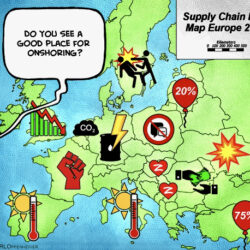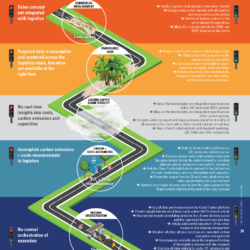Five tactics for mitigating price increases in parcel shipments

The price of parcel and express shipments in Europe is expected to increase by between 4 and 7% this year (4-6% for domestic shipments and 5-7% for cross-border ones), according to the new Transport Monitor from Buck Consultants International (BCI). There are ways to mitigate the price hikes, however, and BCI outlines five tactics for companies.
The turnover in the parcel and express shipment market is expected to double over the next five years. “It is exactly this market growth, fuelled by e-commerce in combination with increasing costs for fuel, drivers and accessorial cost, which results in this unprecedented high cost increase,” says Carlo Peters, Principal Consultant at BCI. However, companies can take action to limit the effect of these price hikes. BCI lists five tactics to help businesses mitigate and reduce their parcel spend.
Reduce the need for speed
The first tactic is to be critical and align the service strategy with the actual need for delivery speed. Is a ‘next-day guaranteed’ or a ‘pre-8am’ service really required, or will a standard 24-48 hour service suffice? The price difference between a very fast delivery service and a standard service can easily be a factor of 3 to 6 in favour of the standard service, according to BCI.
Own distribution network
The second tactic is to consider setting up an own distribution network and creating a local presence. Substantial savings can often be found in the basics of a company’s supply chain design, such as by moving distribution centres closer to – or even into – local markets. Recent studies for BCI clients show 25% reductions in freight costs and a more than 10% reduction in total logistics costs. Opportunities in terms of cost, service, quality and risk can be identified and analysed through an integral distribution network design study. The design of both commercial packaging and transport packaging also often offers interesting savings opportunities, according to BCI. For example, redesigning packaging can avoid ‘shipping air’ by making it more appropriate for the product or by packing small items in envelopes or polybags instead of boxes.
Multi-carrier strategy
The third suggestion is to opt for a multi-carrier strategy rather than a single carrier. Working with one global parcel carrier who offers cross-border solutions to serve all markets is the easiest way to set up a Europe-wide parcel service solution. However, depending on their volumes, profiles and requirements, companies can reduce costs and often increase their service levels at the same time by using a multi-carrier strategy, BCI claims. It can also be very beneficial to work with large national partners, combined with a direct local network infeed model. Such models are more complex to manage but can significantly reduce parcel freight bills, according to BCI.
Negotiate a better deal
The fourth tactic is to negotiate smarter procurement and a better deal. An important question beforehand is whether to run a tender process with Requests for Proposals or whether to only negotiate with the existing service providers. Rate benchmarking provides insight into that decision. If companies do decide to tender, it is important to be clear on which portion should be tendered, and to understand not only the carriers’ different pricing methods (e.g. per parcel, per kg, per dimensional weight, etc.), but also the detailed cost drivers that contribute to the parcel price. This includes consideration of how the shipment characteristics (weight, volume, shape) impact on the base rate, the surcharges and other accessorial costs. According to BCI, incomplete base data or incorrect assumptions can lead to choosing the wrong carrier, resulting in unnecessarily high freight bills.
Access to the right data
The fifth and final tactic is to ensure the availability of the correct data at the right level of detail in order to put the other four tactics into practice. An advanced transport management system (TMS) with options such as dynamic carrier allocation and automated invoice control are a prerequisite, states BCI. Data collected via the TMS can then be used for management reporting, analysis and continuous improvement processes.










